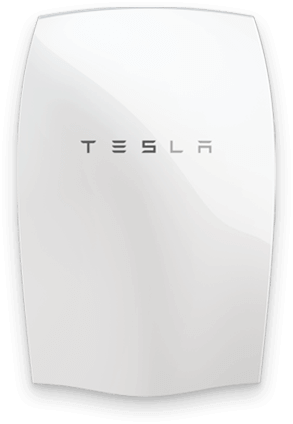Lithium ion batteries vs lead acid batteries
We recommend lithium ion batteries since the price per kWh is similar. Lithium ion batteries are also much better matched to solar storage since it is extremely flexible.

| Lithium ion batteries | Lead acid batteries | |
|---|---|---|
| Product | Tesla Powerwall | Hoppecke Sun Powerpack Classic |
| Nominal capacity (kWh) | 7 | 16 |
| Useable capacity (kWh) | 6.4 | 7 |
| Wholesale price including VAT | £3,478 | £3,203 |
| Cost per kWh | £543 | £534 |

Assumptions used in above calculations
- Maximum discharge 100% vs 50%
- Round trip efficiency 92.5% vs 75% (energy put in to battery system vs what is available after losses).
Hoppecke also offer a lithium ion alternative to their sealed lead acid batteries.
The Tesla Powerwall has a 10 year warranty. Lead acid batteries have a warranty based on the number of cycles (charge/discharges) before its capacity falls under 80% of its original capacity. The Hoppecke Sun Powerpack Classic has 2500 cycles at a depth of discharge of 50% and a temperature of 20 °C. The expected use pattern for a battery can have a significant impact on its useful life. The battery life will not only depend on the expected use pattern but also the battery storage temperature, speed of discharge/charge, effectiveness of the charge controller and the depth of discharge.
Litihum Ion Phosphate batteries are extremely low maintenance. Sealed lead acid batteries are also fairly low maintenance, but they do need to be looked after to ensure their state of discharge does not fall below 50% (whereas the Tesla Powerwall can be fully discharged).
We often hear lithium ion can catch fire. The Telsa battery is lithium ion phosphate which is known to be much safer than other lithium ion technologies. The Tesla system has internal safety mechanisms to ensure battery temperatures are monitored and the system is turned off in the event of overheating. It also has a unique liquid thermal management system. The high voltage is also an area of concern; however, the Tesla system has a DC/DC converter, so during installation it stays as low voltage. The Tesla system remains at low voltage until the inverter instructs the Tesla Powerwall to turn on the DC/DC converter and increase the voltage to 400v. Higher voltage means much smaller cables are possible.
Other considerations
- Lead acid batteries require a bulk charge taking the batteries to 80%; followed by a absorption charge; and then a float charge. Each of these charges require a different voltage and current which is not well matched to solar output, since the process typically takes about 6 hours to fully charge a battery.
- The life is also improved when the batteries are brought back to their fully charged state regularly, which may require grid input when the sun is not shining.
- Grid input may also be required for lead acid batteries for the equalisation charge. An equalisation charge is to avoid battery sulfation. A lead acid battery must be equalised (controlled overcharge) on a regular preventive basis – this may require mains input.
- Finally, lead acid batteries have a slow discharge rate not well suited to solar and household loads which may discharge the battery quickly.
